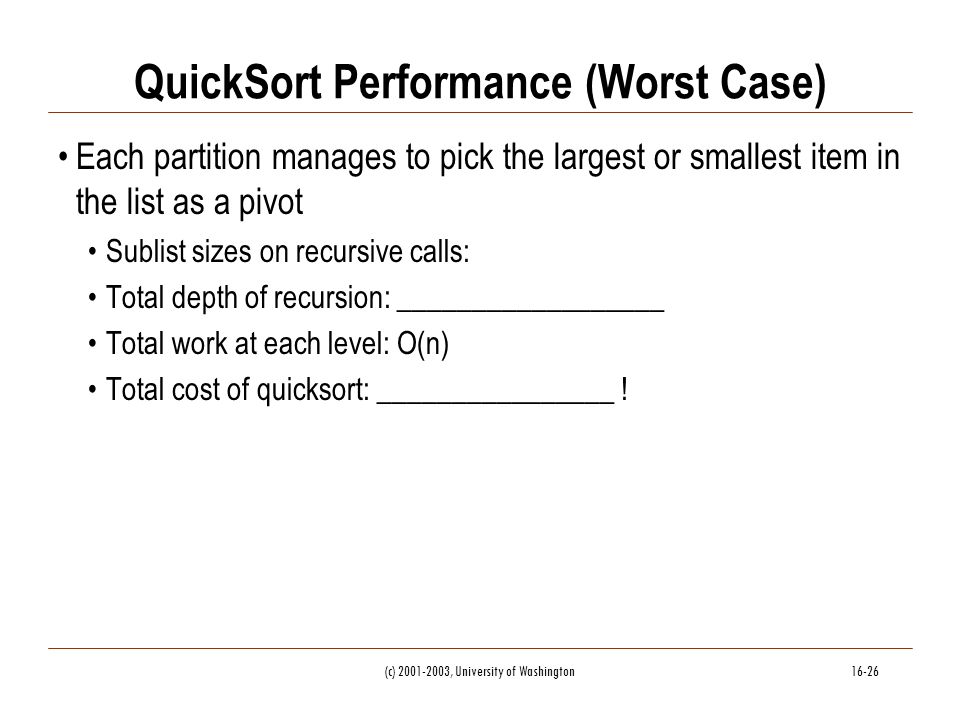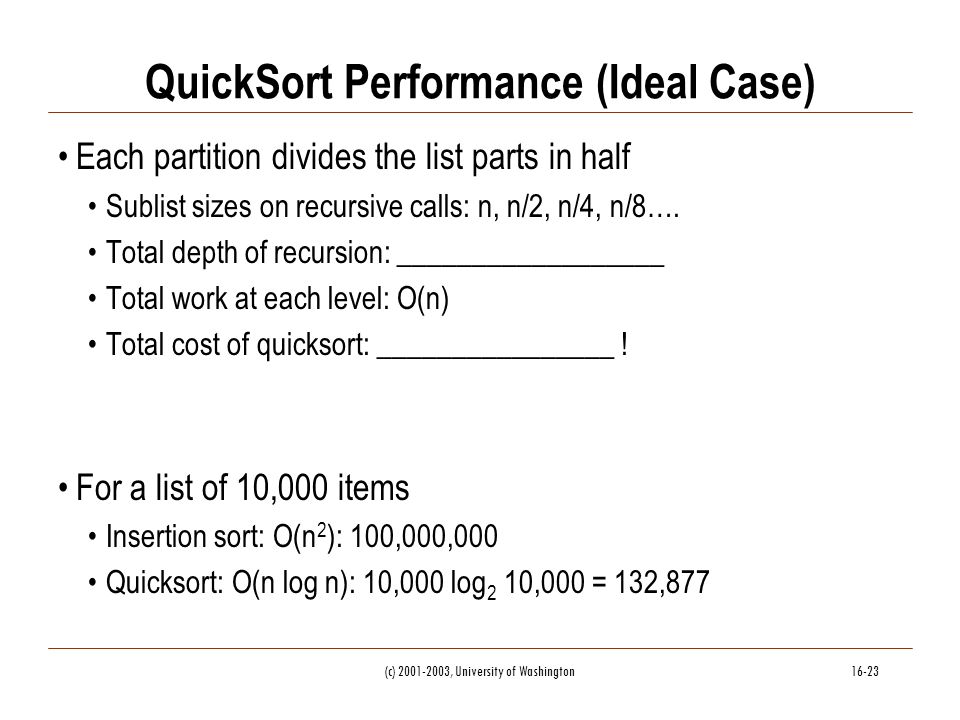Välimuistissa Samankaltaisia Käännä tämä sivu Read and learn for free about the following article: Analysis of quicksort. We will count the number C(n) of comparisons performed by quicksort in sorting an array of size n. We have seen that partition(). The most naive pivot selection algorithm is to just choose the first. I believe that the worst case for quicksort depends on the choice of the pivot element at every step.

Quicksort has its worst performance, if the. In this scenario, you have this. Recursively apply quicksort to the part of the array that is to the left of the pivot. So far, our best sorting algorithm has O(nlog n) performance : can we do any.
Merge sort performance is much more constrained and predictable than the performance of quicksort. The price for that reliability is that the. Since finding the median takes O(n) time, this gives Θ(nlogn) worst-case performance.

However, since randomized quicksort is very unlikely to. For most purposes, Timsort – the hybrid between. Because the behavior of quicksort is complex, we start with an intuitive discussion of its performance in Section 8. Partition array into left and. This video is part of the Udacity course "Technical Interview". A second easy way to improve the performance of quicksort is to use the.
The default sort is some kind of optimized quicksort mixed with insertion. Gets the source of an algorithm from the. The quick sort uses divide and conquer to gain the same advantages as the merge sort, while. When this happens, we will see that performance is diminished. The minor bumps in the plots for FAME arise probably because of the. QUICKSORT : Performance – Randomized QUICKSORT. We would like to ensure that the choice of pivot does not critically impair the performance of the sorting. Comparative Performance Evaluation of Heap-Sort and Quick-Sort Algorithms.
The answer depends on strategy for choosing pivot. Supporting High Level Language Semantics within. Comparing different sorting algorithms for time performance has always been amusing. Why do we analyze the average-case performance.
Quick Sort seems to not want to let go off the axis.